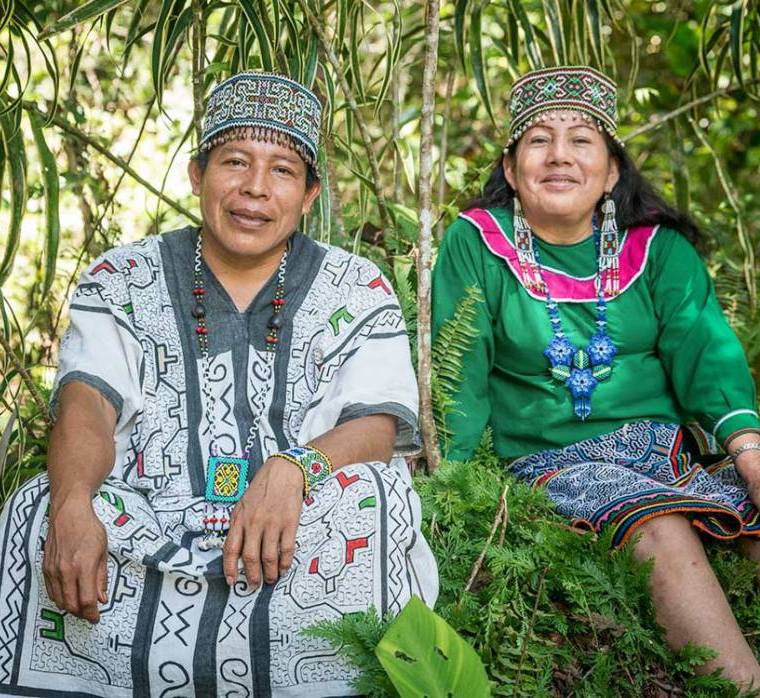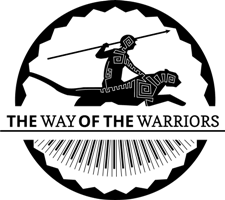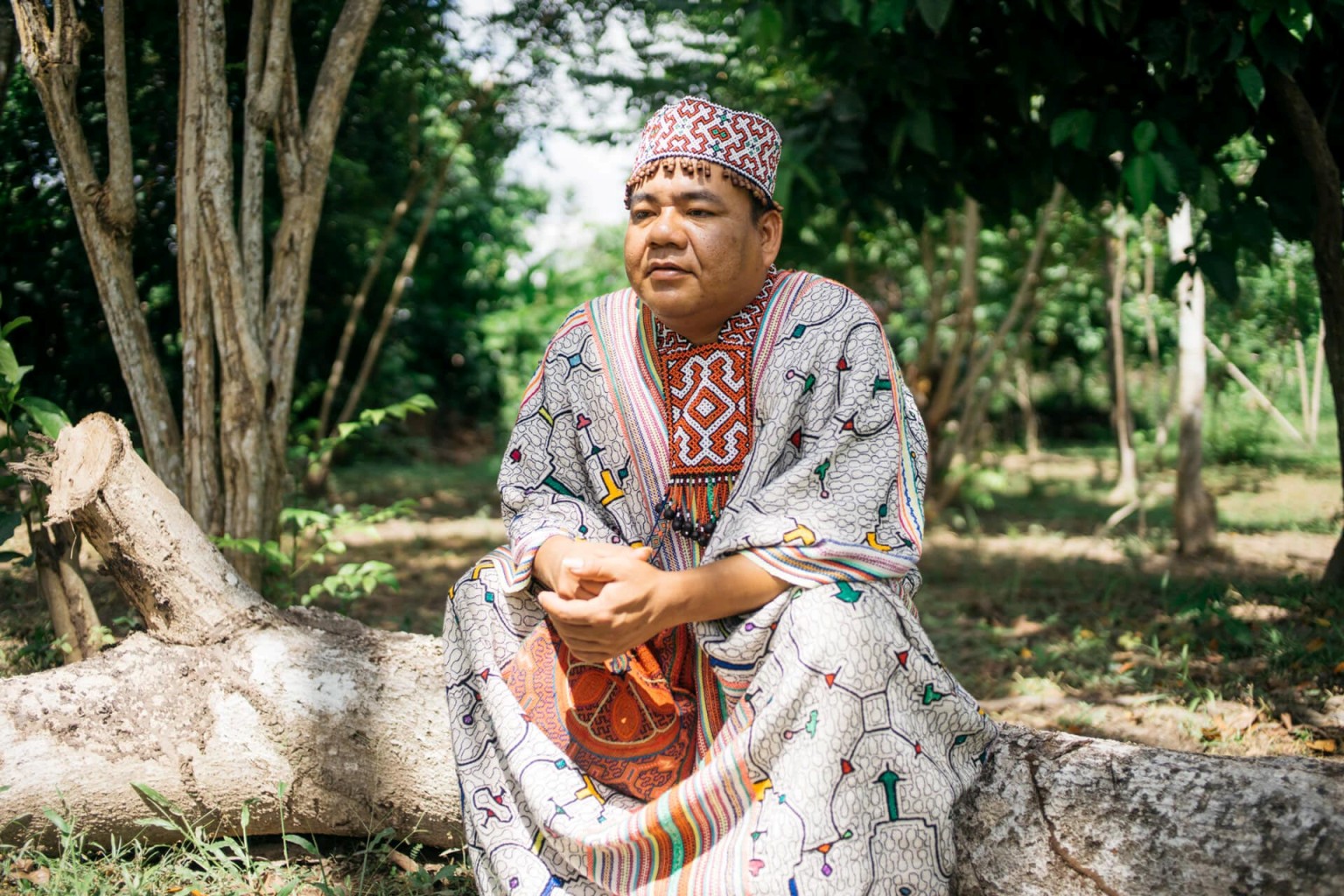The Shipibo-Conibo people, originating along the Ucayali River in the Peruvian Upper Amazon, are well known for their shamanic healing traditions and their vast knowledge of plant and trees medicines of the rainforest. The Shipibo have a particularly strong relationship with ayahuasca and many consider the Shipibo to be the most highly skilled ayahuasca healers in the Peruvian Amazon.
Ethnobotanical plant medicines such as ayahuasca are now increasingly being focused on by modern researchers as having considerable potential for treating a wide range of conditions. Clinical research is also shedding light on the neuropsychological effects of these plants and the implications for improved cognitive function and integrative thinking that can help people deal with daily life issues in more effective and creative ways.
 However, as western science attempts to begin to understand ayahuasca and its healing properties, Shipibo healers carry knowledge that has been passed through hundreds, possibly thousands of years of experience working with this sacred medicine. Shipibo healers undergo training for a minimum of ten years in order to be able to safely, responsibly, and effectively carry out deep healing with ayahuasca and many other plants of the Amazon.
However, as western science attempts to begin to understand ayahuasca and its healing properties, Shipibo healers carry knowledge that has been passed through hundreds, possibly thousands of years of experience working with this sacred medicine. Shipibo healers undergo training for a minimum of ten years in order to be able to safely, responsibly, and effectively carry out deep healing with ayahuasca and many other plants of the Amazon.
This healing fundamentally recognises the full spectrum of human health, and the fact that we are both physical and energetic beings. Shipibo healing addresses issues on the physical, emotional, psychological (predominantly the subconscious), psychic, energetic and spiritual (soul) levels of being. They focus on addressing the root source of disorder and disease, which typically originates through unresolved traumatic experiences, both personal and trans-generational.
Shamanic Perspective of Trauma
“Throughout recorded and oral history, it has been the task of the shaman, or tribal healer, to help restore balance and health to individuals and communities where it has been disrupted,” writes Peter Levine, a pioneer in the treatment of trauma. “In contrast to Western medicine, which has taken its time in recognising the debilitating effects of trauma, shamanistic cultures have acknowledged such wounds for a very long time.”
The perspective of plant-spirit healers is foreign to most of our Western healthcare practitioners, doctors, nurses, and therapists alike. However, this worldview, so familiar to the indigenous peoples, is gaining wider acceptance…because it greatly assists in the healing process, and because it works.
Healing the Spiritual and Energetic Levels
Shamanic healers see that residual energy, that comes as a result of traumatic experiences, gets trapped and persists in the body and is expressed in a wide variety of symptoms: anxiety, depression, disassociation, fear, panic, insomnia, and other psychosomatic and behavioural problems.
These symptoms are signals from our body, mind, and soul that there are undischarged residual energies that need to be addressed and cleaned. If we don’t deal with these energies and ignore the warning signs, disorders arise and disease will then often manifest as a final warning system.
The shamanic healer’s talents, like those of the Western trained physician, lie in diagnosis–in the discovery of the identity and the energetic nature of illness and disorder. But unlike our modern Western doctors, shamanic healers can also empower their client dramatically, divine their illnesses’ ultimate root causes while in an expanded state of awareness, clear them at their spiritual and energetic levels, and prevent their reoccurrence by utilising the assistance of compassionate transpersonal forces poised to help just beyond the borders of the physical world we all take so much for granted.
Soul Retrieval
Shamanic healers recognise that there is often a highly damaging and negative impact on the soul of an individual who experiences combat (or any other acute trauma). Addressing the symptoms of trauma on psychological and emotional levels will ultimately not reach into the energetic roots nor resolve the damage that is experienced by the soul through trauma.
Indigenous healers see that when an individual experiences severe trauma, the soul becomes fractured and fragmented. In essence, pieces of the soul of the individual break off from the soul body, reducing life force and leaving holes (soul wounds) that are then filled with heavy, dense residual energies from the trauma.
The primary causes of illness only become a threat when a person’s natural protective mantle develops a weakness. When the classic physical or psychological symptoms are presented, they must be dealt with at the energetic and spiritual levels for true and lasting healing to occur.
The Gift of Trauma Transformed
Held within the symptoms of trauma are the very energies, potentials, and resources necessary for their constructive transformation. In order to release the energies caused by trauma, we need the help of caring and experienced healers, and to be surrounded by the protection, connection, and support of nature. By committing to our own healing process, guided by highly evolved healing traditions, we are gifted with the possibility to clear of the pains of the past, reclaim our innate wholeness, and finally return to peace and dignity.
Thus, trauma has the potential to be one of the most significant forces for psychological, social, and spiritual awakening and evolution. How we deal with and resolve trauma (as individuals, communities and societies) greatly impacts the quality of our lives. It will ultimately affect how we will survive and evolve as a species.


